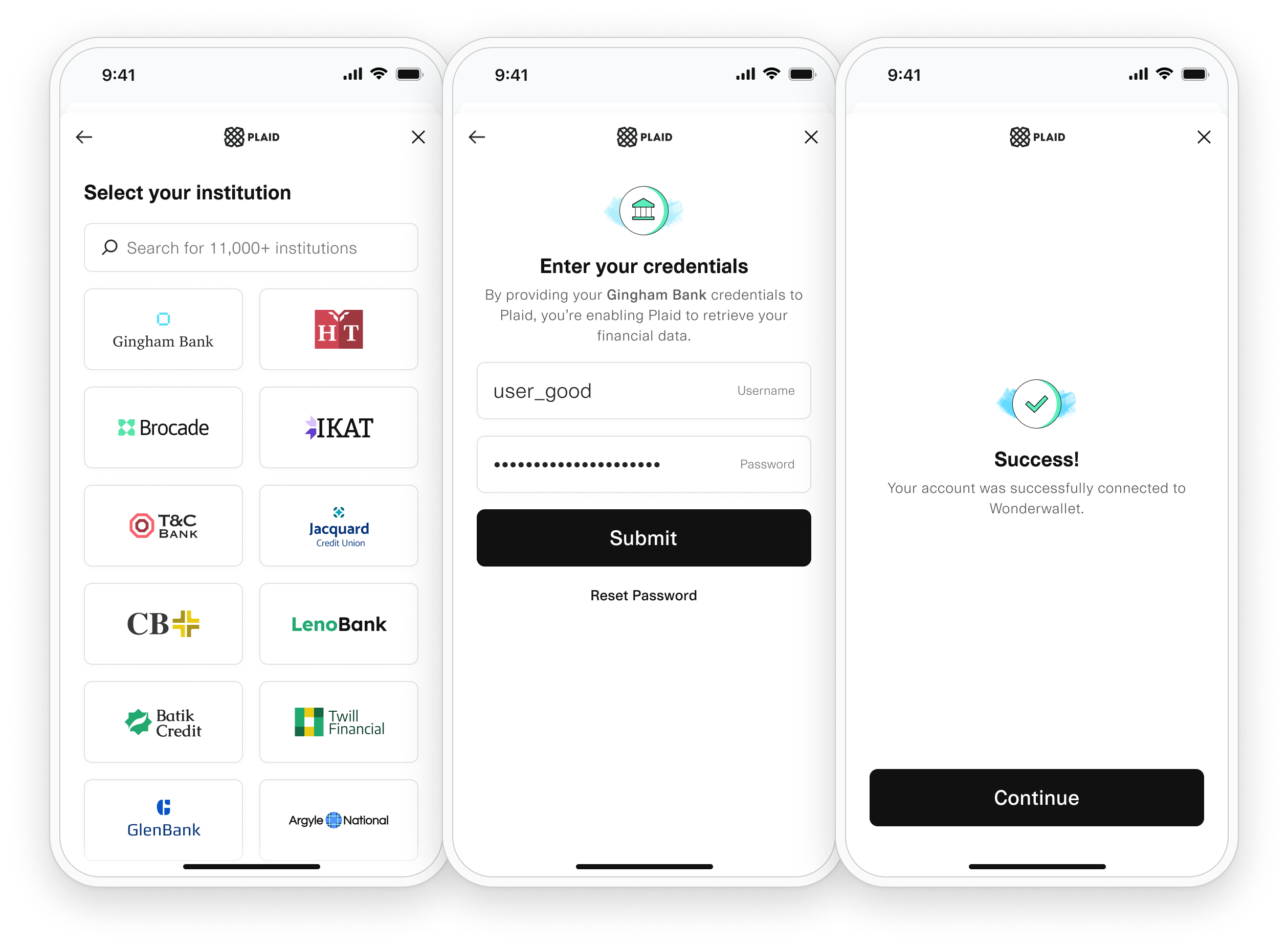After dealing with Plaid integrations since 2021, I can tell you Plaid Link is the OAuth flow you'll grudgingly accept. It's the client-side widget that connects bank accounts to your app, and despite wanting to throw your laptop out the window every Tuesday, it beats building your own bank integrations or dealing with Yodlee's enterprise bullshit or MX's credit union focus.
The OAuth Dance: User clicks connect → App generates link token → User authenticates with bank → Bank redirects to Plaid → Plaid returns public token → App exchanges for access token → Everything breaks on mobile Safari.

The Reality Behind the Marketing
Plaid Link works through link tokens that expire in 30 minutes – a gotcha that bit me hard when users started the flow, got distracted by their phone, then came back to a broken screen. The docs casually mention this, but they don't warn you that expired tokens throw INVALID_LINK_TOKEN errors that'll send you down a 3-hour debugging rabbit hole convinced your OAuth implementation is fucked. Happened to me on a Friday at 4:30 PM. Perfect timing.
The public key integration is dead as of January 31, 2025. If you're still using public keys, you're fucked – the Link Token migration is mandatory. No exceptions, no extensions.
The Plaid dashboard gives you colorful charts showing how many connections are failing, but limited tools to actually fix them.
Mobile Safari: The Devil's OAuth Implementation
Here's what Plaid won't tell you upfront: OAuth redirects on mobile Safari are a fucking nightmare. The browser's handling of redirect URIs is inconsistent, especially with SFSafariViewController on iOS 16.3+. Your users will see blank screens, failed redirects, and mysterious "connection failed" errors that make zero sense.
GitHub is full of issues about this exact problem. The workaround involves implementing custom URL schemes and praying the host app handles them correctly. Check Stack Overflow for community solutions.
Production Lessons Learned the Hard Way
Webhook reliability is garbage. Plaid's webhooks decide to stop firing during bank maintenance – you won't know until users start asking why their balances are from last Tuesday. I learned this the hard way during a Series A demo when our "real-time" transaction feed was 6 hours stale. CEO was not happy. Build retry logic and manual sync buttons or you'll get paged at 2am like I did. Monitor Plaid's status page like your sanity depends on it.
Rate limiting is undocumented by design. You'll discover the limits when you hit them, usually during user onboarding spikes. The error message just says "too many requests" without telling you what the actual limit is or when it resets. Took me 4 hours and a Stack Overflow deep dive to figure out their backoff strategy. Pro tip: Start with 1-second delays, double each retry. Build exponential backoff into everything from day one.
Institution outages happen constantly. Banks go down for maintenance without warning, usually during your product demos. Build graceful degradation using error handling patterns or your customer calls will be painful.
The Integration Tax
Current baseline pricing starts around $500/month for production access. That's before you factor in per-connection costs that scale with your user base. Budget accordingly – this isn't a free trial that becomes cheap at scale. Our bill went from $500 to $3,200 in 6 months as we added users.
Pricing Reality Check: Pay-as-you-go (marketing speak for $500/month minimum), Growth (volume discounts after you're hooked), Custom (enterprise pricing that requires selling your firstborn).
The dashboard customization is limited to colors and basic text. Don't expect to make Link look native to your app – it'll always look like Plaid with your brand colors slapped on. For more control, consider the hosted Link option.
The bottom line? Plaid works great when it works. When it doesn't, you're debugging OAuth flows in mobile Safari at 2am, questioning your career choices while users blow up your support queue demanding to know why their Chase account "suddenly stopped working." Welcome to fintech integration hell – population: everyone building financial apps. I've been here 3 years and still haven't found the exit.

